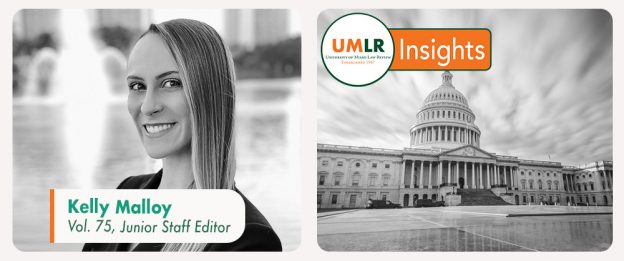KELLY MALLOY—On December 27, 2020, the Trademark Modernization Act (“TMA”) was signed into law as part of a bipartisan COVID-19 relief package. Amending the administrative procedure and law surrounding trademarks, the TMA provides for third-party submission of evidence relating to applications, establishes expungement and ex-parte proceedings relating to the validity of marks, and, importantly, reinstates a rebuttable presumption of irreparable harm in certain cases. Though part of a several-thousand-page bill, the writing of the TMA was meticulously overseen by several important authorities on the subject, including the U.S. Patent and Trademark Office (“USPTO”) and the International Trademark Association, before its introduction to Congress. Overall, we can expect the TMA to benefit trademark owners, better protect consumers by extension, and help declutter the U.S. trademark registry.
For our trademark system to function fairly and properly, it is imperative that the USPTO has accurate knowledge of marks that are actually in use in interstate commerce. In practice, this requires the USPTO to maintain a keen awareness of the counterfeiting and cluttering that continue to hinder our trademark system. Unfortunately, a recent rise in fraudulent trademark applications has threatened the system’s integrity, undermining its goals of promoting fair and efficient competition in the market. Further, applicants have been plagued by the shrinking availability of marks, with the House reporting that 97.1% of the most common English words, which account for 89.1% of all English words used, are confusingly similar with an already registered mark. By establishing new and efficient proceedings to clear the register of “dead wood” (marks not properly in use), the TMA aims to counteract mark depletion, promote efficient competition, minimize trademark search costs, and allow for applicants to obtain marks with greater advertising power. Specifically, the TMA’s two mechanisms for cutting the dead wood are (1) ex-parte reexamination, which allows a party to call into question use-based registrations, and (2) ex-parte expungement, which concerns U.S. registrations based on foreign registrations.
On injunctive relief, the most common remedy in trademark disputes, the TMA’s restoration of a presumption of irreparable harm significantly helps mark owners by effectively satisfying one of the four requirements for relief off the bat. Back in 2006, the United States Supreme Court decision in eBay v. MercExchange essentially eliminated the presumption of irreparable harm in patent cases, triggering a circuit split on its elimination in trademark cases as well. Prior to eBay, courts presumed irreparable harm from infringement and nearly always granted injunctive relief to patentees who showed it. Notably, however, the Court’s reasoning in eBay largely flowed from their finding that the Patent Act lacks evidence of congressional intent for courts to depart from the four-prong relief standard. In contrast, the TMA makes Congress’ intent crystal clear—the presumption of irreparable harm is back.
To be sure, the TMA amends Lanham Act § 32(a), resolving the circuit split. A House report on the TMA cites to the Gilsons, who are famous in the world of intellectual property for their treatise on trademarks, to explain that the presumption assumes that an injury to reputation or goodwill cannot be easily quantified or adequately compensated with monetary damages, and that consumer confusion would unequivocally erode market share to an unquantifiable degree. The most significant aspect of the TMA for mark owners, the reinstatement of the presumption of irreparable harm will make it easier for brands to obtain injunctions upon a showing of likelihood of success on the merits.
There are also a few additional, though less momentous, changes brought about by the TMA. For example, the TMA also authorizes the USPTO to shorten response deadlines, requires the USPTO to set clearer regulations for third parties to submit letters of protest evidence during examination, and affirms the political independence of Administrative Law Judges of the Trademark Trial and Appeal Board (TTAB). Needless to say, the intellectual property community is already on the edge of its seat as it waits to witness the effects of the TMA in action.






